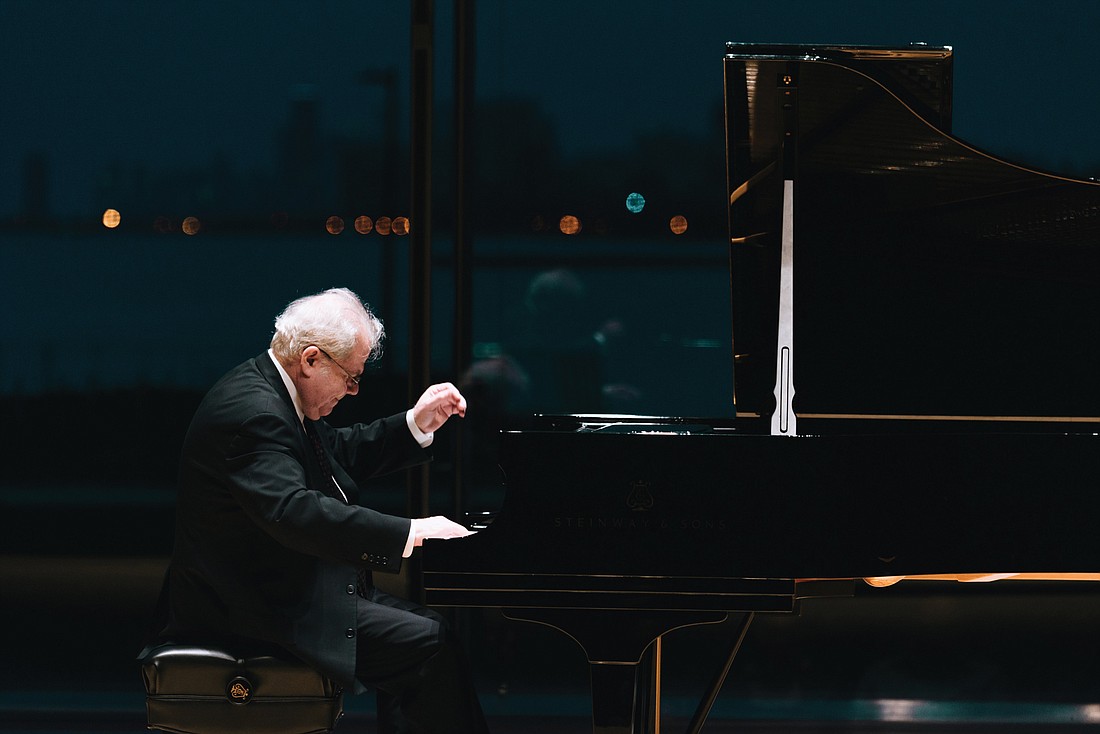- April 25, 2024
-
-
Loading

Loading

Emanuel Ax is all about the music and only the music. From the time he emerged from the wings, walked across the stage, bowed and sat down at the piano, we knew this performance of Beethoven’s Piano Concerto No. 1 was the only thing on his mind.
Ax’s demeanor at the keyboard is very low key. He doesn’t wear fancy clothes, flail his arms about, wink at the audience or conduct the conductor. Nothing gets between him and Beethoven, and Beethoven and the music. Performances like this one are why we decide to go into the music profession and makes everyone want to practice more and harder. And yes, it’s also why we buy tickets to hear this great music.
This was the final concert of the Sarasota Orchestra’s Masterworks 4 series at Van Wezel Performing Arts Hall, and Ax’s performance alone was worth more than the price of the concert.
Ax’s playing is much in the style of Artur Rubinstein and Rudolf Serkin: only the music, with a fluid and flawless technic, sailing through passagework like a downhill skier, with just plain effortless and elegant playing. Always in complete partnership with the orchestra, this performance was an excellent example of how an orchestra and soloist can meld in a large chamber music-like experience.
Ax used one of Beethoven’s later cadenzas (he wrote several), which could have never been played on the smaller five-octave piano for which the concerto was originally written. This extended cadenza was quite a feat itself, showing the changes in Beethoven’s style from the rest of the concerto. Ax’s well-deserved encore was the Schubert Fantasy, Op. 12, No. 2 in F minor.
One of my college professors once raved so about a performance, that he felt he had just a “musical bath.” Now I know what he means.
Concluding the concert was the mammoth Fifth Symphony of Prokofiev. Music Director Anu Tali is obviously at home here, and this music is part of her DNA. Prokofiev wrote his Fifth Symphony more or less in a “style to please the censors,” in that it has “traditional structure, broad dramatic values and conservative harmonies.”
It can also mean that it is big, broad and loud, which it certainly is. Even though Prokofiev wrote it as a “pure” symphony with no narrative “program,” it is completely evocative in so many places of his music for film, opera and ballet.
Some of the passages are reminiscent of his ballet “Romeo and Juliet,” or an extended funeral march, a fast train, chase music for a movie or just about any scenario one could imagine. But it is all pure Prokofiev, with demanding solos for every section of the orchestra, and even more demanding for a conductor who can mold all these musical ideas into one great structure. Tali and the orchestra succeeded here in every way.
One of Tali’s largest achievements during her tenure with the orchestra, in addition to raising its performance level, is to infuse the group with the style and soul of the music of Scandinavia, the Baltics and Russia. She has shared part of her musical soul in the feel and interpretation of these composers with the orchestra, and Sunday’s performance of Prokofiev’s Fifth Symphony is but one more example of their technical and emotional prowess in execution.
I wish I could be as enthusiastic about the Overture to Verdi’s “La Forza del Destino,” which opened the concert. Anu Tali’s sun is a stark Baltic sun, and not the warm and nurturing sun of Verdi’s Italy. The overture was given a rapid run through, with little pause to bask and breathe in the warm Italian sun that is so evident even in Verdi’s most dramatic scores. And with Sunday’s brisk winds and weather, that warmth would have been most welcome. Maybe next time.